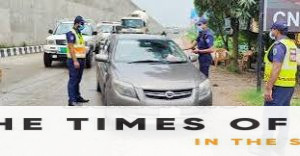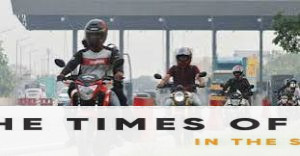
There has been a radical change in the country’s road transport sector in the past era. During this time, many new roads have been built across the country, and many old roads have also been renovated. As a result, the sufferings of the roads have reduced to a great extent in the case of movement in any part of the country. This has brought relief to the public.
However, despite visible progress in road communication, mismanagement of this sector still remains. There is no planned initiative to eliminate administrative errors or proper implementation of road laws. Which is constantly reflected on the road. Every day people are victims of road accidents in different parts of the country. Every day lives are lost on the road.
Bangladesh Road Transport Authority (BRTA) has issued the ‘Motor Vehicle Speed Limit Guidelines, 2024’ to restore order on the roads. The directive was issued on Wednesday (May 8). The Road Transport and Highways Department of the Ministry of Road Transport and Bridges issued this directive to determine the speed of which type of vehicle will run on any road in the country. It has also been informed that if the instructions are violated, legal action will be taken against those concerned
To achieve the United Nations Sustainable Development Goals (SDGs), the government has decided to control the speed of vehicles on the roads to reduce road accidents by 2030. It is for this purpose that the new guidelines have been issued. However, the question has arisen, how scientific is it to determine the speed limit of vehicles on the road
Experts and non-governmental organizations working on roads say that even if the speed limit of the vehicles on the road is set, it will not be able to play an effective role in preventing accidents. On the other hand, the risk of accidents can be increased by directing traffic at different speeds on the same road
According to the new policy of BRTA, the maximum speed limit on expressways and highways of the country will be 80 km and the maximum speed limit in cities and towns will be 40 km. Private cars, microbuses, buses, minibuses and other light vehicles can travel at a maximum speed of 80 kmph on national highways (category ‘A’). The speed limit for trucks, motorcycles and articulated lorries on those roads will be 50 km per hour.
At the same time, the speed of private cars, microbuses, buses and minibuses on national highways (category ‘B’) will be 70 km per hour. And 50 km per hour for motorcycles and 45 km per hour for trucks and articulated lorries. Besides, private cars, microbuses, buses and minibuses can run at a maximum speed of 60 km per hour, motorcycles at 50 km per hour and trucks and articulated lorries at a maximum speed of 45 km per hour on inter-district roads.
Besides, the maximum speed limit for private cars, microbuses, buses and minibuses on city corporation, municipal and district roads will be 40 km per hour and the speed limit for trucks, motorcycles and articulated lorries will be 30 km per hour.
The speed limit of upazila and village roads has also been determined in that directive. The local administration will determine the speed limit for vehicles on roads near educational institutions, religious institutions, hospitals, markets and residential areas. It shall in no case exceed 40 km in case of national highways and 30 km in case of regional highways. However, the speed limit of vehicles engaged in emergency services like ambulance and fire service will be relaxed in this case.
BRTA says that the country has expanded its advanced communication network. As a result, the number of high-speed passenger and cargo transport on roads and highways is also increasing rapidly. It often causes unexpected road accidents. Excessive speed and reckless driving are major causes of road accidents in Bangladesh.
When asked about this, BRTA Director (Road Safety) Sheikh Mohammad Mahbub-e-Rabbani told Jago News that the law enforcement agency implements the law. Our mobile courts are being conducted daily across the country at the field level It will apply as the law generally applies The police will see, our mobile court will see
However, he said that it is not possible to solve the problem only by running the mobile court, and hundreds of police members are working at the field level. It is their responsibility to see them Also the operation of mobile courts can be strengthened a bit more
On the question of how effective this law will be to control the speed of vehicles, he said that the law is made to be 100% effective It shall be executed by the user or users If they do not obey the law, punishment will be arranged It’s just the beginning People still don’t know it. It is not possible to implement the law in one day, everything will be done in stages.T
he Road Safety Foundation expressed doubts about the speed limit monitoring and enforcement mentioned in the new guidelines Chairman of the organization Professor Dr. AI Mahbub Uddin Ahmed told Jago News that excessive speed of vehicles is one of the reasons for the accident Accidents cannot be reduced if over speeding is not stopped
Setting speed limits is a good initiative. But there are limitations Who will monitor the speed limit? Given the shortage of technical capacity and manpower for proper surveillance, there is doubt as to the extent to which the directive will be enforced. There is some manpower on the highways but not at all on the regional or rural roads
Dr. Mahbub also said that the speed limit of motorcycles has been kept lower than that of buses on the highway If there are multispeed vehicles on the same road then accidents will happen Simply imposing speed limits without addressing vehicle management issues will not be very effective Solving one problem side by side with many problems is not effective To ensure the overall safety of the highway, the solutions to all the problems must be implemented in a coordinated manner
Secretary General of Bangladesh Passenger Welfare Association. Mozammel Haque said, the new policy did not seem to have technical knowledge The speed of motorcycles has been slowed down even more than the speed of buses on highways This seems to increase the number of accidents All cities in the country have been brought under the same speed limit The speed of vehicles in Dhaka city and the speed of vehicles in Rangpur city are not the same This is a bureaucratic decision, not a technical decision
However, Highway Police chief Additional IGP Md sees this directive as positive. Shahabuddin Khan. He also thinks that the enforcement of the law on the road will be easier as a result of the issuance of this directive.
Shahabuddin Khan told Jago News that there were no detailed speed guidelines earlier based on road and vehicle types. As a result, there were many times a problem in the enforcement of laws by the highway police or traffic police Now it will be easier for the police to enforce the law Adequate road signs will be needed to inform drivers where and how fast the vehicle will be driven on which road But full implementation of the law requires extensive campaign and public awareness.
In this regard, former director of Bangladesh University of Engineering (BUET) Accident Research Institute (ARI) and transportation expert. Md. Hadiuzzaman told Jago News that the speed limit of the vehicle is not scientific in the reality of our country’s road system. Those who made this law may have seen the reality of the foreign country.
Although the speed limit is set in foreign countries, there are lane-based vehicles It is also determined which lane will be used by which vehicle If I think about Dhaka city, there are no lane-based vehicles There is mixed traffic, all the cars moving together randomly.”
Dr. Hadiuzzaman said, the risk of accidents is likely to increase due to the variation in speed of motorcycles and other vehicles More than speed control, it is important to deal with unfit vehicles and unlicensed drivers plying on the roads. These need urgent solutions.
The whole world is now running towards speed Are we slowing down because we can’t reduce risk? If that is the case, then there will be obstacles in the way of progress of science’- said this transport expert.

 Reporter Name
Reporter Name 


















